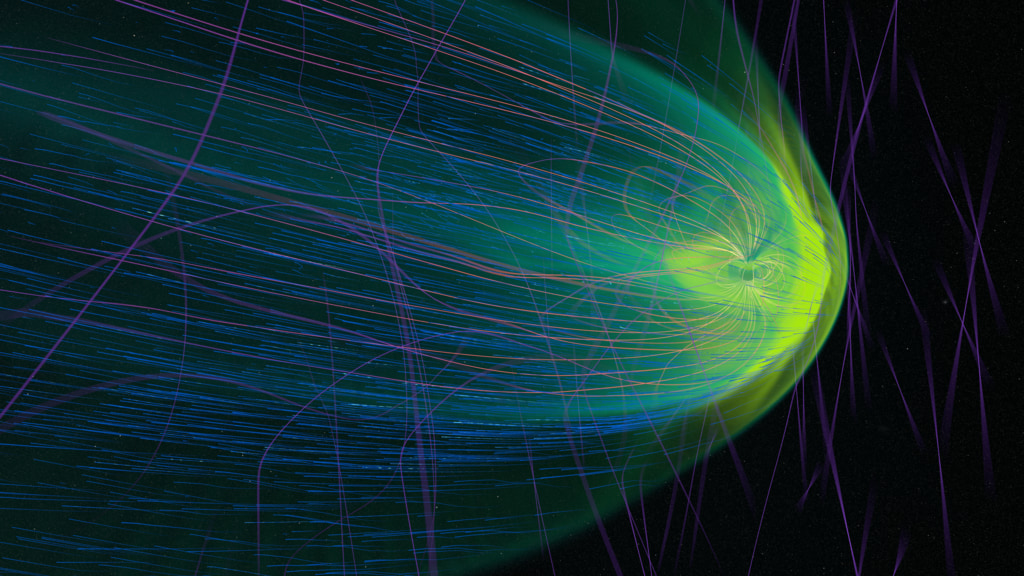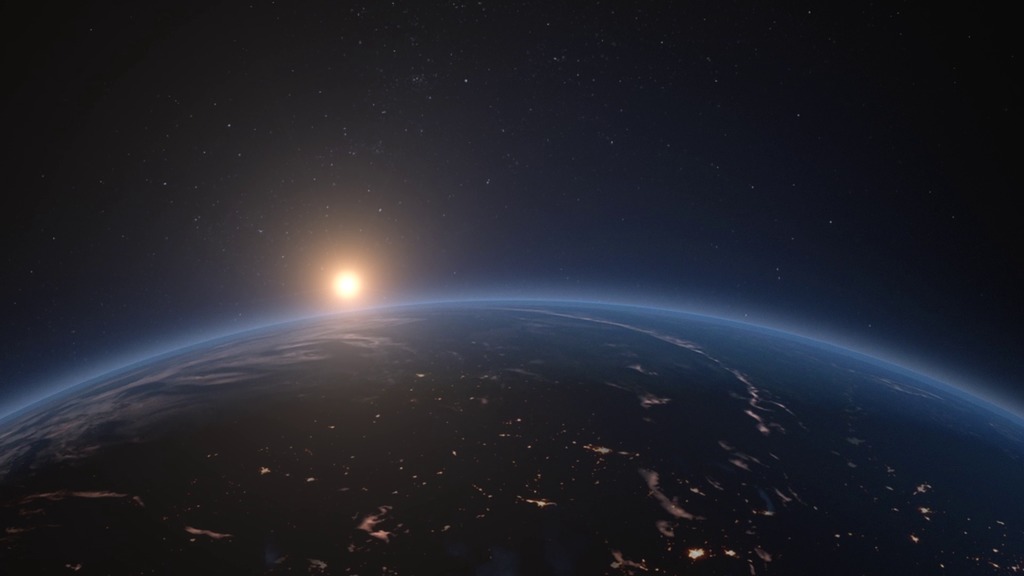Discovering Earth’s Third Global Energy Field
High above the Earth’s North and South Poles, a steady stream of particles escapes from our atmosphere into space. Scientists call this mysterious outflow the “polar wind,” and for almost 60 years, spacecraft have been flying through it as scientists have theorized about its cause. The leading theory was that a planet-wide electric field was drawing those particles up into space. But this so-called ambipolar electric field, if it exists, is so weak that all attempts to measure it have failed – until now.
In 2022, scientists traveled to Svalbard, a small archipelago in Norway, to launch a rocket in an attempt to measure Earth’s ambipolar electric field for the first time. This was NASA’s Endurance rocketship mission, and this is its story.
To learn more, visit: https://science.nasa.gov/science-research/heliophysics/nasa-discovers-long-sought-global-electric-field-on-earth/
Discovering Earth's Third Global Energy Field
Watch this video on the NASA Goddard YouTube channel.
Complete transcript available.
Music credit: "Atoms in Motion" by Phillip John Gregory [PRS], “Curious By Nature” by Eddie Saffron [PRS], “Perfect Vibes” by Thomas Gallicani [SACEM], “Natural Response” by Jonathan Elisa [ASCAP] and Sarah Trevino [ASCAP] from Universal Production Music
Sound effects: Pixabay
The Ambipolar Field: An Agent of Chaos
Complete transcript available.
Music credit: "Anticipating Outcomes" by Simon George Begg [PRS] from Universal Production Music
Conceptual Animation
This animation shows a blue line encircling Earth (not shown to scale) that represents the ionosphere — one of the four layers of Earth’s upper atmosphere. The ionosphere starts about 50 miles (80 kilometers) above Earth’s surface and continues for hundreds of miles into space. Unlike the lower atmosphere, the upper atmosphere is very sensitive to fluctuations in electrical energy.
Credit: NASA/Conceptual Image Lab
Conceptual Animation
This animation starts with a close-up view of the ionosphere, represented as a blue arc over a slowly-rotating Earth (not to scale). The view then zooms in, showing nitrogen (N2) that comprises most of the atmosphere. Panning upward, the view then shows atomic oxygen, a lighter element that populates the upper portions of the ionosphere.
When photons from the Sun collide with these gases, electrons can be knocked loose. As the atoms and molecules lose electrons, they become positively charged, making them ions. This process is known as ionization.
After the oxygen atom becomes ionized, the view changes to show a collection of these ionized gases, known as plasma. When there are equal numbers of electrons and ions, the plasma, as a whole, is neither positively nor negatively charged, but neutral. However, the magnetic pull between the individual particles tethers them together by an electric field, like glue. This field is known as the ambipolar electric field.
Credit: NASA/Conceptual Image Lab
Conceptual Animation
This animation shows a collection of particles feeling the pull of gravity competing with the tug of energized electrons.
The hot, lightweight electrons would happily escape to space independently, but they’re shackled to the much heavier ions by the ambipolar electric field. These ions feel the force of gravity over a thousand times more than the tiny electrons and try to pull the electrons back toward Earth. But the electrons have so much energy from the ionization process, they continue traveling up along the magnetic field. (This is represented in the animation by the large, white ions swinging downward as the smaller, purple electrons tug upward.)
The bidirectional nature of this connection gives the field its name: the ambipolar electric field. Ambi- is a prefix borrowed from Latin to mean “both” and the field’s effects are felt most strongly at the poles.
Credit: NASA/Conceptual Image Lab
Conceptual Animation
This animation shows the two main effects of the ambipolar electric field: inflating the ionosphere and generating the polar wind.
The sparkling blue haze surrounding Earth represents the plasma in the ionosphere. At the beginning of the animation, the ionosphere is dense and close to Earth, but when the ambipolar electric field is applied to the plasma, the ionosphere inflates, making it taller. This happens because the tug from the energized electrons, which are connected to the heavy ions, slightly overpowers the force of gravity, creating an upward lift.
Hydrogen ions, however, are so light that the field’s upward force is ten times the downward force of gravity. This accelerates the hydrogen ions upward to supersonic speeds, enough for the ions to escape to space above Earth’s magnetic poles. This hydrogen ion outflow is known as the polar wind, shown in the animation as sparkling white lights traveling up the blue magnetic field lines and out of frame.
Credit: NASA/Conceptual Image Lab
Conceptual Animation
The glow in this animation depicts one of Earth’s fundamental global fields: gravity. Gravity is the force that draws objects toward each other, like an apple falling from a tree toward the ground. Because of its size and density, Earth has a strong gravitational pull, tugging objects toward its center. This consistent pull has affected the formation and evolution of our planet, including the atmosphere.
The blue lines radiating from Earth represent our planet’s magnetic field.
Credit: NASA/Conceptual Image Lab
Conceptual Animation
This animation shows energetic particles from the Sun interacting with Earth’s magnetic field, called the magnetosphere. The magnetosphere is another one of Earth’s fundamental global fields. It originates from the churning of hot, liquid metals in our planet’s core and extends thousands of miles out into space. Our magnetosphere protects us from much of the radiation we encounter in the universe, including the Sun’s energetic particles (shown here coming from the left side of the animation). When these particles run into the magnetosphere, they tend to flow around it like air deflected by the nose of a supersonic jet.
Credit: NASA/Conceptual Image Lab
Conceptual Animation
The sparkling blue glow in this animation represents Earth’s newly discovered third fundamental global field: the ambipolar electric field. This field makes the atmosphere taller by lifting and separating the particles of the ionosphere, like blowing up a balloon. It also lofts some of these particles out into space along magnetic field lines over the poles. This atmospheric escape is known as the polar wind.
Credit: NASA/Conceptual Image Lab
Credits
Please give credit for this item to:
NASA's Goddard Space Flight Center
-
Producers
- Lacey Young (KBR Wyle Services, LLC)
- Miles S. Hatfield (Telophase)
- Rachel Lense (ADNET Systems, Inc.)
-
Editor
- Lacey Young (KBR Wyle Services, LLC)
-
Writers
- Miles S. Hatfield (Telophase)
- Glyn Collinson (Catholic University of America)
- Rachel Lense (ADNET Systems, Inc.)
-
Talent
- Glyn Collinson (Catholic University of America)
-
Animators
- Krystofer Kim (KBR Wyle Services, LLC)
- Wes Buchanan (ARES Corporation)
Release date
This page was originally published on Wednesday, August 28, 2024.
This page was last updated on Wednesday, August 28, 2024 at 11:37 AM EDT.

![Watch this video on the NASA Goddard YouTube channel.Complete transcript available.Music credits: “Journey to the Past”, “New Philosopher”, “Curiosity Cabinet”, “Buzzing Culture”, “Dusk Theories”, “At the Edge of the End” by Laurent Dury [SACEM]; “Strong Voices” by Tom Caffey [ASCAP]; “The Fortune Teller” by Phil Stevens [PRS]; “Shinobi’s Fight” by Benoit Malis [SACEM]; “Spring into Life” by Oliver Worth [PRS]](/vis/a010000/a013400/a013430/VISIONS2_Thumbnail.jpg)

![Watch this video on the NASA Goddard YouTube channel.Complete transcript available.Music credit: "Breakthrough Discovery" by Phillip John Gregory [PRS] from Universal Production Music](/vis/a010000/a014700/a014739/Thumbnail01.jpg)